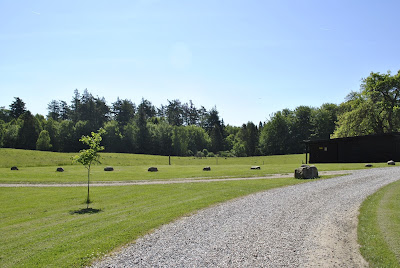Contrast today’s
experiences of a Danish National Park with America’s National Parks in general,
or specifically with one that you have visited.
A national park can be defined differently depending on what
country you live in and what kind of area the park is located on. After our
visit to the Danish National Park, Kongernes Nordsjylland, I noticed several
differences between the Danish park and that of the United States. Even though
both the Danish National Parks and the American National Parks have a desire
and a need to preserve and protect sections of their nations, the two do so in
different ways and have different styles of doing so.
In the Danish National Parks, they try to preserve as much
land as possible, and most of the land in Denmark is suitable for agriculture
and farming. Due to this, the parks allow people to live there, and use their
own land to farm, even though their land lies within the boundaries of the
national park. Unlike the Danish National Parks, many of the parks in the
United States are located in areas with rougher terrain. The Grand Canyon is
located in a very dry climate and the Everglades are in a large, wet swamp-like
area. Due to this, there are very few people living within them, let alone
making a living within them.
 |
| A house on the grounds of Kongernes Nordsjylland, Denmark. |
Another difference between the parks is their size and shear
number of parks located within the country. Based on the size of the two
countries, Denmark and the United States, the United States has far more area
to hold large national parks, which is reflected in the number of national
parks housed in both countries. Currently the United States has 59 national
parks and Denmark has 3, not including Greenland and many of the United States’
parks are much larger simply based on the fact that there is more room for them
in the United States.
 |
| View of a lake within Kongernes Nordsjylland, Denmark. |
Another difference between the two countries’ national parks
is the usage and fees associated with both. In the United States, many people
view national parks as tourist destinations or vacation places, whereas the
Danish view their national parks similar to the way they view other parks, just
on a more grand scale. In the United States, families take vacations to see
vast open spaces that have been preserved and set aside from modern
infrastructure. Even though the United States has more national parks, the
Danish focus more of their culture around the use of parks, both nationally and
locally. Danes can be seen exercising, boating, swimming and enjoying nature in
national parks and local parks alike on any given day. In the United States,
there is a very different culture when talking about parks. While there are
many people who go and enjoy the parks in the United States, there is a much
lower percentage of Americans that use parks on a daily basis compared to that
of the Danish. In addition to this, many of the parks in the United States
charge a small fee upon entering, while the Danish national parks do not. This
makes the parks in Denmark much more accessible for everyday use opposed to
just visiting every once in a while like many Americans do.
 |
| The Grand Canyon, United States of America. |
 |
| Pathway within Kongernes Nordsjylland, Denmark. |
No comments:
Post a Comment